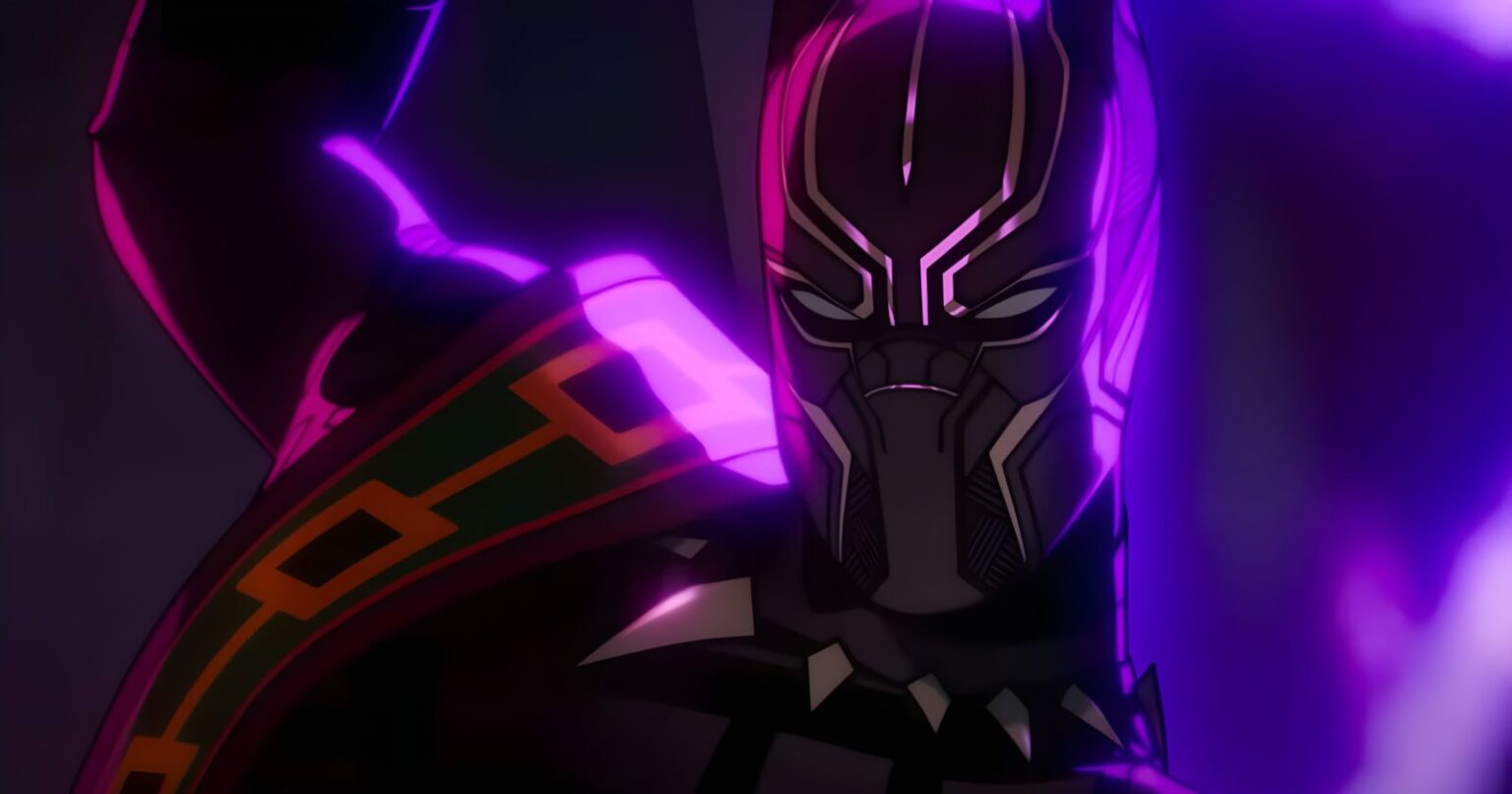TL;DR: Eyes of Wakanda is the rare Marvel Disney+ project that doesn’t try to drown you in Multiverse headaches or cameo overload. Instead, it delivers a grounded, globe-trotting animated anthology about Wakanda’s secret operatives across history. Gorgeous art direction, sharp writing, and a surprisingly emotional core make this the show What If…? wanted to be but never quite became. Not perfect — the finale stumbles with messy time-travel rules — but still one of Marvel’s most confident swings in years.
Eyes of Wakanda
The Black Panther Legacy and Why Wakanda Matters
I remember the first time I saw Black Panther in theaters back in 2018. There was a crackle in the air — not just Marvel hype, but something else. The room felt electric, like everyone understood they were watching more than a superhero movie. It was a cultural moment wrapped in kinetic fight scenes and a killer Kendrick Lamar soundtrack. The MCU had delivered spectacle before (Avengers, Guardians of the Galaxy), but Black Panther was spectacle with soul.
It wasn’t just about T’Challa. It was about a fictional African nation that refused to be defined by colonial scars. It was about Afrofuturism finally being given blockbuster treatment. It was about the Dora Milaje making me want to sign up for spear training, even though I can barely keep my houseplants alive.
The thing is — and Marvel knows this — Wakanda is too rich a concept to be confined to just a couple of films. It’s not a single hero’s story. It’s an entire world. And so when Disney+ announced Eyes of Wakanda, my first reaction was a mixture of excitement and mild dread. Excitement because… well, more Wakanda. Dread because Marvel’s animated track record is uneven at best (What If…?, I’m looking at you).
But here’s the thing: Eyes of Wakanda? It works. And it works because it doesn’t try to be everything at once.
Wakanda’s Hidden History, Told One Mission at a Time
Unlike the What If…? chaos multiverse circus, Eyes of Wakanda keeps its ambitions focused and its stakes intimate. The premise is simple, almost deceptively so:
Each of the four episodes follows a different Wakandan War Dog — elite agents tasked with retrieving vibranium artifacts from across the globe — at different points in history.
These are not the Avengers. These are spies, warriors, and wanderers moving through the shadows of history, their work mostly invisible to the rest of the MCU. And because each episode is a self-contained story, you can drop in anywhere without needing a spreadsheet of Marvel continuity open in another tab.
Episode One – Redemption in Blood and Steel
The opener is a banger. We meet a disgraced former Dora Milaje who’s been sent after The Lion, a rogue Wakandan leader using the nation’s resources for conquest beyond its borders. The episode wastes no time — there’s blade-on-blade combat, political betrayal, and a level of animated violence that made me double-check I hadn’t accidentally turned on Invincible.
This isn’t sanitized Marvel. People bleed. The choreography feels tactile. And while The Lion isn’t going to dethrone Killmonger as the MCU’s most complex villain, he’s charismatic enough that I found myself briefly agreeing with him before the plot reminded me, “Oh right, he’s that guy.”
It’s also the first sign that this show understands Wakanda’s tech isn’t just a shiny toy — it’s part of their cultural DNA, evolving naturally through history.
Episode Two – The Trojan War, But Make It Wakandan
If Episode One is a political thriller, Episode Two is a historical epic. Here, a Wakandan warrior finds himself fighting alongside Achilles and Odysseus in the Trojan War. Yeah, you read that right — we’re crossing into Greek myth territory.
This could have easily turned into Marvel’s “Hey, remember Eternals?” moment, but the episode plays it surprisingly straight. No quippy undercutting of drama. Just a war story about loyalty, love, and the cost of staying too long in someone else’s fight.
It’s also the most emotionally devastating episode of the bunch. The Wakandan’s bond with one of the legendary heroes carries a tragic weight, and by the end, I was quietly muttering at my TV, “You didn’t have to do me like this, Marvel.”
If you’ve been waiting for Marvel to do period drama without a wink and a nudge, this is it.
Episode Three – Iron Fist, Finally Done Right
When Marvel announced this one featured Iron Fist, I braced myself. The Netflix version was… let’s just say divisive. But here? We get a leaner, cooler, actually competent Iron Fist. The War Dog in this tale crosses paths with him during what should have been a straightforward mission — until it becomes a fight for survival.
The hand-to-hand combat is some of the best I’ve seen in Marvel animation. It’s fluid, weighty, and feels like it’s borrowing lessons from Avatar: The Last Airbender’s fight choreography. This version of Danny Rand feels like someone who actually deserves the title of Immortal Iron Fist.
Also, if Marvel doesn’t use this as a soft-launch for a proper live-action Iron Fist redemption arc, they’re wasting gold.
Episode Four – The Wobbly Finale
Ah, the finale. It’s not bad — it’s just trying to do too much in too little time. This one’s a more direct prequel to Black Panther (2018) and involves time travel. But unlike the clean, if overly-explained, rules we got in Avengers: Endgame, this version of MCU time travel feels… fuzzy. Inconsistent.
It’s a shame because the emotional beats are there, but the plot mechanics get in the way. There’s also a sense that this episode should have been longer — maybe a two-parter — to breathe. Instead, it feels rushed, like the animators were racing a clock.
Why It Works Where What If…? Didn’t
Here’s the secret sauce: Eyes of Wakanda doesn’t try to smash all its stories together into a forced crossover. What If…? started strong but couldn’t resist the temptation to tie every episode into a big, multiversal finale. That kind of storytelling might work in comics, but on screen, it made the individual stories feel like trailers for a team-up.
Here, the connective tissue is subtle — an artifact glimpsed in one episode turns up in another, an older version of a side character appears later. It’s enough to reward attentive viewers without hijacking the anthology format.
The result? Lower stakes that make the MCU feel bigger. Instead of cosmic-level threats, we see the quiet work of keeping Wakanda safe across centuries. And honestly? That’s refreshing.
The Animation and Music – Almost Vibranium Quality
Visually, the series is gorgeous in concept, slightly uneven in execution. The cultural and period detail in the backgrounds is rich, and character designs pop with personality. But sometimes, movement feels… robotic. Fight scenes mostly hit hard, but there are a few moments where the animation speed dips, making punches feel weirdly slow.
The music, though? Pure fire. Composer Hesham Nazih (Moon Knight) delivers a score that blends traditional African instrumentation with orchestral and electronic textures. The title sequence alone is worth a rewatch.
Why Marvel Should Do More Shows Like This
The MCU has been guilty of overreach lately — too many big swings, not enough follow-through. But Eyes of Wakandafits into a growing trend of smaller-scale, self-contained Marvel projects (Werewolf by Night, The Guardians Holiday Special).
These bite-sized stories are easier for casual fans to watch, and for hardcore fans, they expand the universe without requiring six hours of lore prep. In a crowded streaming market, that’s a win.
Final Verdict
Eyes of Wakanda is exactly the kind of series Marvel should be making right now: focused, character-driven, visually distinct, and willing to play in corners of the MCU that don’t require a multiverse map. It’s not flawless — the finale stumbles, and some animation quirks distract — but it’s a strong argument for letting Wakanda’s world breathe beyond T’Challa’s story.
If What If…? was Marvel’s ambitious but uneven animated experiment, Eyes of Wakanda is proof they’ve learned a few lessons. And maybe, just maybe, it’s a hint that the MCU still has some great stories left to tell.






